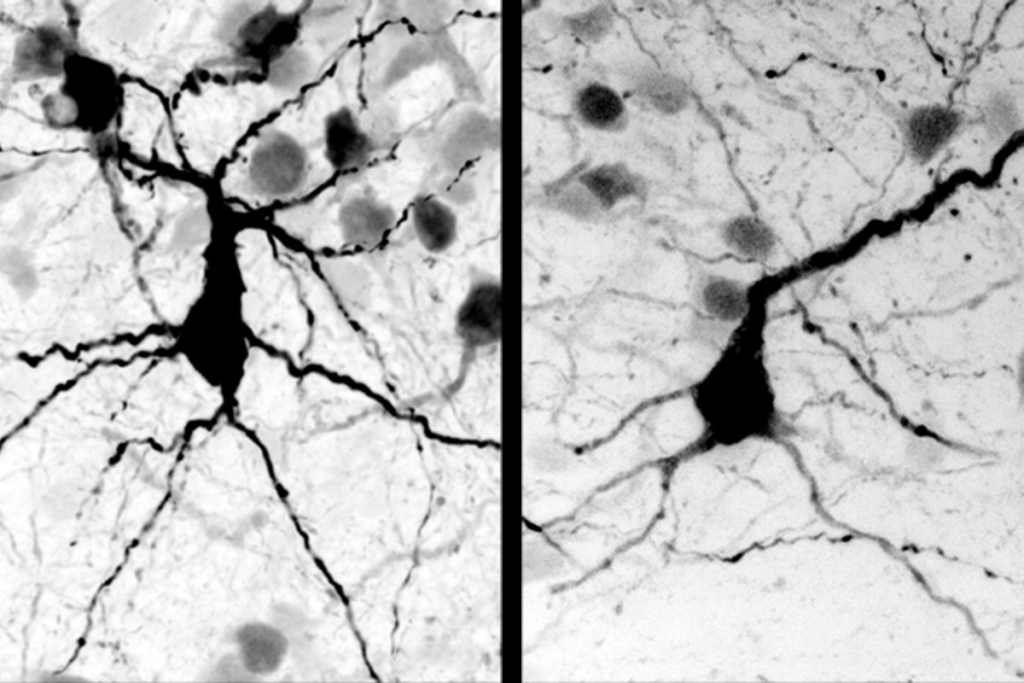Cognition and behavior: Autism brain patterns inherited
Healthy parents of children with autism have an atypical brain response to sound frequency changes that mimics the response of individuals with the disorder.
-
Invisible messages: Individuals with autism have atypical magnetic signals generated by large numbers of neurons working together.
Healthy parents of children with autism have an atypical brain response to sound frequency changes that mimics the response of individuals with the disorder, according to a study published 5 July in Molecular Autism1.
The results suggest that this brain response, which is measured by magnetoencephalography, or MEG, is an endophenotype — a feature present in both people with autism and unaffected family members — that indicates an underlying genetic risk factor.
MEG is a non-invasive imaging technique that detects magnetic frequencies produced by large groups of neurons working together. Several studies have shown that individuals with autism and their unaffected siblings have altered MEG responses to sounds and faces.
In the new study, researchers measured the MEG response to sound frequency in 21 healthy parents of children with autism and 20 adult controls. Typically, after hearing a tone repeatedly, individuals produce magnetic gamma waves that become synchronized with the frequency of the tone. When the tone is modified, the brain produces a secondary response also synchronized with the change in frequency.
The parents of children with autism produce weaker synchronized gamma waves in response to changes in tone than do controls, particularly in the left-brain hemisphere, the study found. Parents whose scores on both the Autism Spectrum Quotient and the Social Responsiveness Scale indicate more autism-like features have particularly weak gamma responses.
This response could be used a biomarker for autism, the researchers suggest.
References:
1: Rojas D.C. et al. Mol. Autism 2, 11 (2011) PubMed
Recommended reading

New organoid atlas unveils four neurodevelopmental signatures
Explore more from The Transmitter

The Transmitter’s most-read neuroscience book excerpts of 2025

Neuroscience’s leaders, legacies and rising stars of 2025


